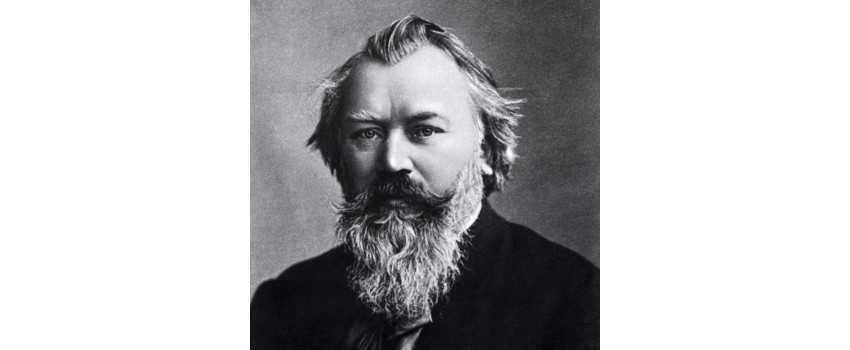Brahms, Concerto in D Major, Opus 77 for Violin and Piano (IMC)
Johannes Brahms, Concerto in D Major for Violin and Piano (Opus 77). Ed. Zino Francescatti. Pub. International Music Company.
Johannes Brahms, born on May 7, 1833, in Hamburg, Germany, was a renowned composer, pianist, and conductor of the Romantic era. Throughout his life, he demonstrated exceptional talent and creativity, leaving a lasting impact on the world of music. Often referred to as one of the "Three Bs" of music, alongside Johann Sebastian Bach and Ludwig van Beethoven, Brahms's contributions to classical music continue to resonate with audiences worldwide.
Early Life and Education
Brahms was born into a Lutheran family and showed an early aptitude for music. He received his first music lessons from his father, who was a double bass player and gave him a solid foundation in music theory and composition. At the age of seven, Brahms began studying piano with Otto Cossel, an accomplished pianist and composer.
Recognizing Brahms's exceptional talent, his family provided him with further opportunities to flourish as a musician. He received financial support from a local benefactor, allowing him to study under Eduard Marxsen, a well-known composer and pianist. Under Marxsen's guidance, Brahms honed his skills in composition, piano performance, and music theory.
Early Career as a Pianist and Composer
As Brahms matured as a musician, he began to establish himself as both a skilled pianist and a talented composer. He premiered many of his own compositions, showcasing his virtuosic piano skills and innovative musical style. His collaborations with renowned musicians, such as pianist Clara Schumann and violinist Joseph Joachim, further elevated his reputation in the music world.
Brahms's compositions spanned a wide range of genres, including symphony orchestra, chamber ensembles, piano, organ, voice, and chorus. His meticulous attention to detail and his ability to infuse deeply romantic motifs into his compositions set him apart from his contemporaries. While some critics considered his work scholarly, others, including Arnold Schoenberg and Edward Elgar, recognized Brahms's artistry and valued his contributions to classical music.
A Traditionalist and an Innovator
Brahms's music showcased a unique blend of traditional and innovative elements. While he drew inspiration from the architecture and creative processes of classical masters, he also incorporated his own romantic sensibilities into his compositions. His works showcased a classical sense of form and order, distinguishing him from the grandeur and dramatic style of his contemporaries.
Brahms's reverence for Ludwig van Beethoven was evident in his compositions. A marble bust of Beethoven adorned his home, overlooking the very spot where he composed his masterpieces. The influence of Beethoven's Fifth Symphony can be heard in Brahms's First Symphony, as both pieces are in C minor and culminate in a triumphant C major resolution.
Mastery of Counterpoint and Rhythm
One of Brahms's defining attributes as a composer was his mastery of counterpoint. He skillfully incorporated complex contrapuntal techniques into his compositions, seamlessly blending different melodic lines. For Brahms, counterpoint was not just a technical exercise, but a means of expressing his emotions and creating lyrical poetry.
Brahms's use of counterpoint was sometimes met with criticism, as his compositions displayed intricate contrapuntal artistry. In works such as Op. 9, Variations on a Theme by Robert Schumann, and the third movement of the A major piano quartet Opus 26, Brahms showcased his skillful command of counterpoint. His ability to combine thematic development, counterpoint, and form was a testament to his technical prowess and musical genius.
In addition to his command of counterpoint, Brahms also exhibited a deft understanding of rhythm and meter. His exposure to Hungarian and gypsy folk music during his childhood greatly influenced his rhythmic sensibilities. Brahms's works often featured irregular rhythms, triplet figures, and the use of rubato, creating a unique and dynamic musical experience.
The Hungarian Dances and the German Requiem
Among Brahms's most famous works are the Hungarian Dances, a collection of lively and spirited compositions. These dances, with their infectious melodies and rhythmic complexity, showcase Brahms's ability to infuse his music with the spirit of Hungarian folk traditions. In their advanced rhythmic thought, they are often compared to the works of Igor Stravinsky.
Another notable work in Brahms's repertoire is the German Requiem. Inspired by the death of his mother and incorporating material from a previously abandoned symphony, the Requiem is a testament to Brahms's mastery of counterpoint and rhythm. It is a deeply personal composition that pays homage to his musical influences, particularly Robert Schumann.
Influences and Musical Legacy
Brahms drew inspiration from a wide range of composers, both past and contemporary. He held great admiration for classical composers such as Wolfgang Amadeus Mozart and Joseph Haydn, considering Mozart to be the greatest composer of all time. Brahms's affinity for Mozart's music was evident in his performances and compositions, showcasing his deep appreciation for the classical style.
In addition to Mozart and Haydn, Brahms studied the works of numerous other composers, including Giovanni Pierluigi da Palestrina, Johann Sebastian Bach, and Franz Schubert. These composers, along with the early Romantic composers such as Robert Schumann, left a lasting impact on Brahms's musical style and served as sources of inspiration throughout his career.
Brahms's contributions to classical music continue to be celebrated and admired by musicians and audiences alike. His meticulous attention to detail, mastery of counterpoint and rhythm, and ability to combine traditional and innovative elements have solidified his place among the great composers of the Romantic era. Brahms's music remains a source of inspiration for generations of composers and continues to captivate listeners with its timeless beauty.

Johannes Brahms, Concerto in D Major for Violin and Piano (Opus 77). Ed. Zino Francescatti. Pub. International Music Company.